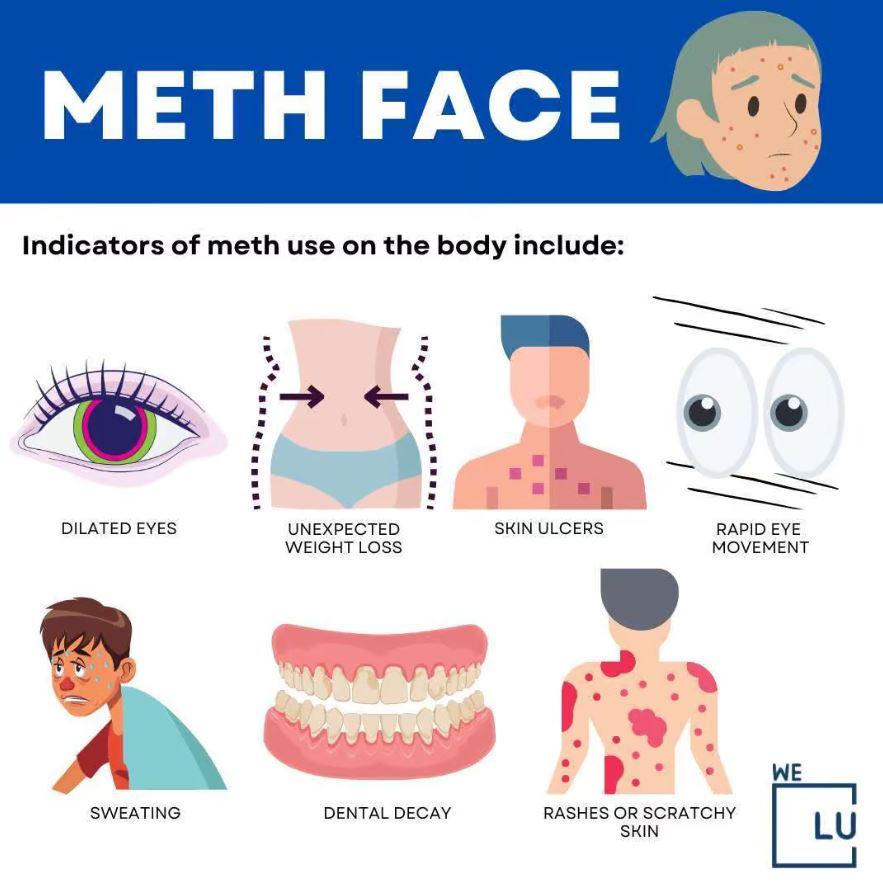What behavioral manifestations of methamphetamine abuse contribute to the development of meth sores?
Methamphetamine also known as meth, is a highly addictive and potent stimulant that wrecks havoc on the body and mind of those who take it. While the detrimental effects of methamphetamine to the brain and general health are well-documented, its impact of the effects on skin are often overlooked. Meth sores, also referred to as methamphetamine-induced skin lesions, serve as a visible reminder of the destructive consequences of meth abuse. The painful and frequently infected sores tend to appear on exposed body parts such as the arms, face, and legs, which serve as physical indicators of the toll taken by this devastating drug.
Understanding Methamphetamine-induced Skin Lesions:
Meth sores are a direct consequence of the physiological changes that methamphetamine causes. The drug can trigger a cascade of harmful effects on your body, such as a decrease in circulation of blood, a slowing of healing of wounds, and increased risk of infection. These causes, in conjunction with the behavioral manifestations of methamphetamine abuse, such as obsessive picking and scratching, contribute to the formation of open sores and painful ones.
Location and Appearance:
The skin lesions caused by meth vary in appearance and the severity. They typically begin as small, red, and itchy bumps that quickly grow into more extensive, open sores. These lesions may be observed across the body, but they are most typically seen on the face, arms and legs. This public exposure increases the psychological and social repercussions, as meth sores become difficult to conceal and can be viewed as stigmatizing by those suffering with addiction.
Health Risks and Complications:
The open meth sores' openness exposes patients to a higher risk of developing infections. Bacterial infections, like cellulitis, may result from the infiltration of pathogens into the wounds that are open. In addition, the repetitive picking and scratching associated with methamphetamine abuse increase the chance of developing secondary infections. They can also cause deeper tissue destruction. In the most severe instances, these infections may spread throughout the body with life-threatening implications.
Psychosocial Impact:
Beyond the physical repercussions The psychological effects of meth sores must not be ignored. The obvious and traumatic appearance of the lesions frequently results in severe social isolation, low self-esteem and a diminished quality of life for individuals affected. The presence of meth lesions can elicit negative reactions from others, perpetuating societal stigmas and preventing their reintegration to society.
Treatment and Prevention
Treatment of meth-related sores requires multi-faceted treatment that tackles both the addiction and the resulting skin lesions. Comprehensive addiction treatment programs, including behavioral therapy, counseling, and medical interventions, are essential for tackling methamphetamine dependence. Also, dermatological procedures such as wound care, antibiotics for treating infections, and scar management, can improve the skin's appearance and promote healing.
Prevention efforts are equally essential. Public awareness campaigns that highlight the physical consequences of methamphetamine use can discourage potential users and inspire those suffering from addiction to seek help. Accessible addiction treatment services as well as support groups play a crucial part in preventing the development of meth sores, by addressing the root cause of the problem.
Conclusion
Methamphetamine-induced skin lesions, commonly known as meth sores, serve as a stark reminder of the detrimental impact of methamphetamine abuse on the skin. The painful and visible lesions on the face, arms, and legs illustrate the toll taken by this harmful drug. Beyond the physical damage meth sores can cause psychological harm. meth sores add to the challenges faced by those affected. Through educating people, encouraging prevention, and providing comprehensive treatment, the community can work towards reducing the prevalence of meth-related sores and helping individuals on the path towards recovery.
Also check: Pass a methamphetamine drug test

Comments
Post a Comment